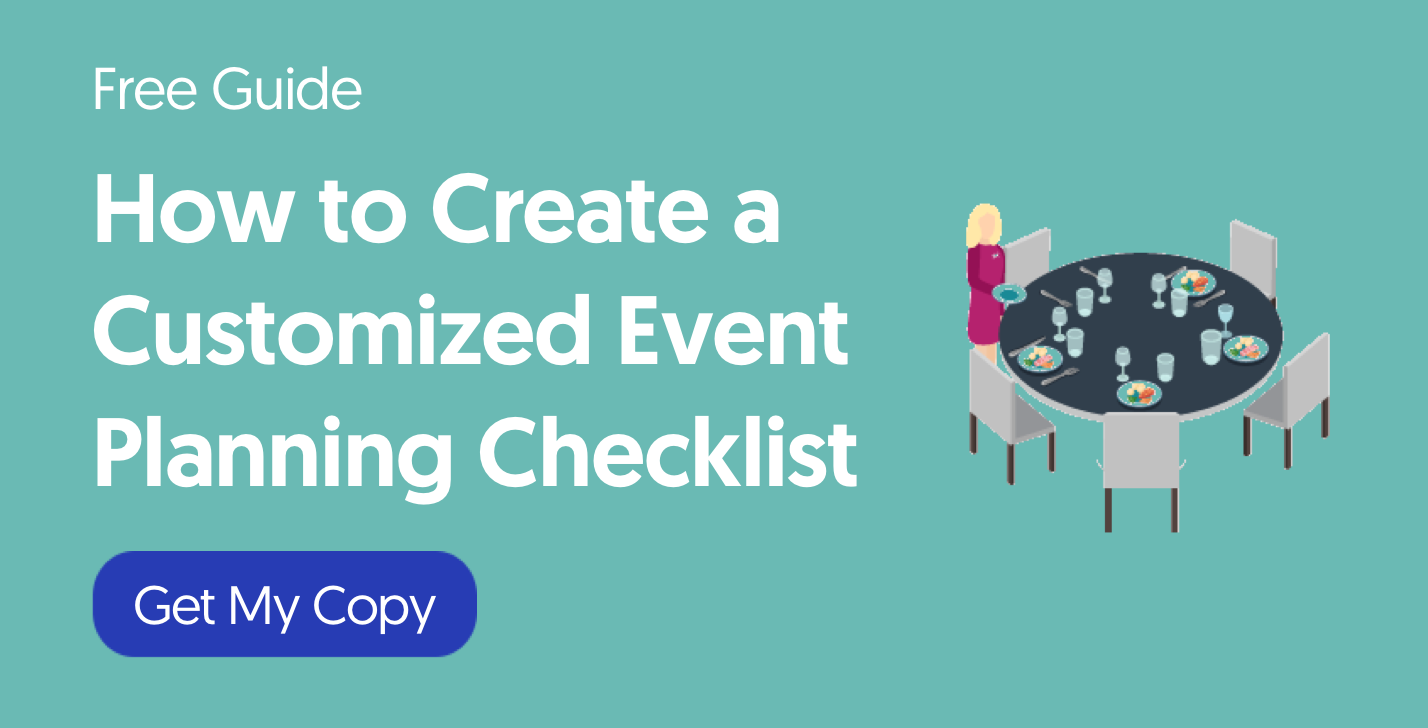
Monday Motivation: Awesome Event Icebreakers Attendees Will Enjoy
If you’re in charge of organizing icebreakers for an event, it’s helpful to think of how you react when you hear the familiar chords of the ‘Macarena’ at a wedding. It could be ‘Yay!’ ‘Ugh!’ or ‘Meh.’ This is the likely breakdown of reactions from event attendees when they hear it’s icebreaker time.
But even though some people won’t be excited, icebreakers are a “thing” for good reason. Done well, they build engagement for the event ahead while helping attendees relax, get to know each other, and express themselves. Executed poorly or not well thought through, they can feel pointless, confusing, or uncomfortable”and actively undermine the goal of the exercise.
Read on for some must-know tips on choosing icebreakers that attendees will actually like. Then take a look at some useful, in-depth, and fun ideas for meeting and networking icebreakers.
How to match the right icebreaker to the event and the attendees’
A quick internet search will give you fistfuls of icebreaker ideas, but not every activity is created equal, and some are unwise choices. No matter the event, the icebreaker activity should be:
Non-threatening:
Don’t put people on the spot or ask them to talk about failures or group problems. Keep groups fairly small. Asking people to interact before larger groups transitions the event into public speaking rather than simply networking or team building.
Easy to understand:
Choose something with SUPER-simple rules, and explain those rules clearly.
Interactive:
You want people to interact with each other, not focus on what they’re going to say when their turn comes.
In line with social norms of the group:
Don’t ask people to share about their personal lives or touch each other in any capacity unless you know for sure it is comfortably within that group’s established boundaries. In a workplace, it is okay for an icebreaker to help people take new group roles or level the playing field, but it should not subvert established hierarchy norms.
Relevant to the event:
One thing the participants have in common is their presence there; capitalize on that and get them focused on the work ahead by tailoring the icebreaker to the content of the event.
In line with logistics:
How much time is in the schedule? Ideally, the icebreaker will serve as a warm-up for the event purpose itself, so the time isn’t entirely lost from the schedule. Is there space for people to move around? In that case, you can choose an icebreaker that incorporates movement. Is the event layout fixed lecture-style seating, consider polling. Either have people stand to vote”then they can look around them to see like-minded folks”or use an app like Sli.do.
How to pick the right icebreaker for a specific purpose:
Use the icebreaker to help attendees get the most out of the event.

1. Team building:
Are people going to be working as a team to solve problems? They’ll need to connect and establish their roles on a team. (Ideally, you want to make sure you hear from everyone in the first 15 minutes” before the group has a chance to establish who is going to talk the most and who is going to be silent in this context.)
2. Networking:
Is the goal to expand professional networks? You can ease things along by helping them kick off some small talk with a form to fill out with their top favorites from categories like food, books, or movies. Then have them share the list in small groups.
3. Q&A:
Are attendees going to listen to presentations and then ask questions of a panel? They might appreciate the opportunity to organize their thoughts in pairs or trios before the question-and-answer period.
4. Fun.
Is this mainly a social event? Then the purpose of the icebreaker can be to get people comfortable in the group, relaxed, and even laughing.
Explore fun icebreakers for company meetings
A good icebreaker for a meeting should get people comfortable contributing aloud in a group setting. If the group is manageably sized, you’ll want to have everyone speak briefly to the entire group. (For large events, divide attendees into smaller groups.) If time allows, it’s great to break the crowd down into groups of three or four, so individuals can make a more significant connection with one or two other people before speaking to the whole group. See the icebreaker questions below if this fits into the agenda.
Remember that you want people listening and interacting, not worrying about what they’re going to say when it’s their turn. So give out paper and pens. People can write down their thoughts, instead of trying to keep their talking points straight in their heads while they’re waiting. Introverted event attendees who prefer some lead time to organize their thoughts before they speak will especially appreciate this gesture.
Meeting icebreakers can be short, and they can definitely be fun. Here are some ideas to get you started:
1. Common ground:
Divide people into pairs and have each pair come up with the two most interesting things they have in common. Each individual presents one of their commonalities to the entire group.
Pairs that don’t know each other well begin connecting based on commonalities, which fosters a feeling of collaboration, while those who do know each other should push past the obvious commonalities to and discover new shared qualities and interests.
2. Common ground (slightly larger group edition):
Have people count off (thereby breaking up clumps of people who know each other well already) into groups of three to five. The groups must find one non-obvious thing they all have in common, and also something unique about each member. Present to the whole group as above.
˜Non-obvious’ is the key here! No, Well, everybody’s got a nose… answers. A meeting of CPA’s should not find that everyone is an accountant. (Or, they might find that, but they should definitely keep going beyond their shared profession.)
3. Lists of five:
In groups of 2-5, participants come up with a quick ˜list of five’. Five what? That’s up to you. Tailor the topic of the lists to the topic of the meeting, and people will discover friendly commonalities and differences on the subject that brings them together. At a tech trade show dinner, maybe make it ˜Five apps you can’t live without’ or ˜Future technology you can’t wait for.’
At mandatory meetings, expect an unenthusiastic response from some participants. They may feel forced to be there and are unlikely to bond over interest in the topic. In that case, it may make the most sense to choose an icebreaker that will accomplish more (like ˜common ground’, above) and/or take less time (like ˜one-question check-in’, below).
A non-tailored ˜list of five’ can be easy and fun for a group that’s already game (Five worst pets? Five best superhero powers?). But the same activity can feel like an irritating time-waster, in the tradition of I-totally-hate-icebreakers, to a reluctant group. So read the room.
4. Photographs:
In the Harvard Business Review, Tammie Plouffe describes an unusual, memorable and purpose-oriented icebreaker. For this activity, the meeting leader focuses the group on one question, and then participants choose from a deck of black-and-white photographs the image that captures some of their thoughts on the issue. (You can find photo decks online or print stock photos.) Everyone shows their image and describes how their choice reflects their thoughts. Finally, the meeting leader helps the group discover common themes, dig into insights, and plan for the future.
This option requires preparation ahead of time and active facilitation during the activity, but it is unique and won’t likely elicit groans from attendees. The same photographs can be used for just about any subject. And it is especially good for teams and people who will be working on a project for some time: The combination of images and words makes people’s insights and contributions very memorable.
5. One-question check-in:
This is for the whole group at once, and it’s probably the quickest and simplest icebreaker out there. Everybody answers one question.
You will know by now to tailor the question to the group. Choose a question that encourages positive thinking, and let people choose how personal to get: What is something you are looking forward to [this season, or related to event purpose]? When was the last time you did something [perhaps event-related] for the first time? When is the first time you remember hearing of [company, job type, product type, etc]? What is a little-known fact about you? (This last one is fantastic if people are unenthused about the meeting purpose.)
6. Two truths and a lie:
A list of icebreakers is hardly complete without this activity, but be wary! It has its drawbacks. It can take a surprisingly long time, and the random facts about other people tend to go in one ear and out the other. This one is perhaps best suited for groups that know each other a little already, but keep an eye on the clock.

Discover lively networking event icebreakers
Networking icebreakers should get people moving around and talking to many other people. Overall, these take more prep work than meeting icebreakers, but they are outstanding opportunities to foster social ease and help people start making connections.
1. Human bingo:
Prepare a bingo-like grid with an identifying statement in each square. Distribute a copy to each participant. Participants must gather signatures in their squares to fill their sheets. Catch: Each person can only sign once per sheet!
Don’t forget to customize the squares to the event. Each square can provide a jumping-off point for networking, so make them count. Create event-specific items like: ˜Has had two or more jobs outside this industry.’ ˜Swears by [industry-specific tool/instrument/software].’
Consider also attributes that can easily lead to further conversation: ˜Has lived outside [this state or country].’ (Cool! Where?)
Maybe throw in a few squares that make it easy to identify someone to approach: ˜Has brown hair’ or ˜Is wearing glasses.’
Overly broad, and common identifiers like ˜Has an older sister’ aren’t great conversation starters; best to leave those out.
2. Throwable mics:
This one is fun”which is lucky, because gamification is all the rage. Get a soft, throwable mic cube and put questions to the audience. For example, What did you want to be when you were little, and how does it relate to what you’re doing now? This game’s got motion to keep people loosened up, talking to give people ideas for conversation-starters later, and also the sheer delight of tossing and catching a squishy mic.
3. Do you know me?:
This is an outstanding activity for introducing two or more groups that know members of their own group, but not the other. Everybody gets a card with the name of someone from the other group. Each participant approaches people to ask Do you know me? If the answer is yes, they may ask one or two follow-up questions of each person, e.g.: What’s my job title? What color hair do I have? How would you describe me? and make a note of the answers on their card. (Consider creating and posting a list of possible questions tailored to the group.)
This activity gets people moving around and talking, specifically with people they don’t know.
4. Plate match game:
If there is food at an event where you want to encourage people to mix, turn the meal into a low-stress networking opportunity. Label tables with colors or numbers, and label the bottoms of plates with stickers of the same. Have people check the bottoms of their plates before filling them at the buffet. People will sit in random groups without the stress of coming up with those groups on their own.
Provide some questions for discussion, but basically let people eat their food.
5. Three commons, one unique
Have attendees get into groups of 5 (ideally with people they don’t know) and within 3-5 minutes, generate three things that they all have in common that are not obvious and then 1 unique characteristic of each group member. Once the activity is over, groups can choose to share their findings if they want.
6. Participant bingo
Create a bingo board with different characteristics and participants must find someone to fit into each of the boxes until someone’s board is full. Note: attendees can only be used once.
7. Candy confessional
Bring a bowl with an assortment of candy to the meeting and have participants pick their favorite. Each candy should represent a different question (only to be divulged once everyone has picked a candy) and participants go around and answer the question. Some sample questions are: what is your favorite company memory? what do you see as your biggest challenge going forward?
8. Two Truths & A Lie
Every person at the meeting says two things that are true about themselves and one lie, then the rest of the attendees (or if the meeting is too big, you can split the attendees into groups) guess which statement is the lie. You’ll learn something new about everyone!
9. Who Am I?
Make flashcards with the names of famous people or historical figures and tape a card to every participant’s head without them seeing who they are. Participants then mingle with each other and asking questions to help them figure out who they are.
10. Show and Tell
Have every participant bring something to the meeting that represents him or herself in order to help attendees learn more about each other.
11. Trivia
Create a trivia game surrounding the topic of the meeting or session and see what participants already know. Splitting attendees into teams with others that they may not know will help them network and learn from others with some team spirit!
See 20 engaging event icebreaker questions for your next event
Grab some of the icebreaker questions from the list below, or let them inspire questions customized to your company, industry, or event focus. These questions are best used to spark discussions at tables or in small groups. If attendees are standing, the host can put the question to the entire room and have groups share their answers with each other. If they’re sitting at a table, have multiple questions in the center and let one person pick and read a question, which they then answer themselves before letting everyone give their answers. Here goes!
- If you were stranded on a desert island, which historical figure would you want to be stranded with and why?
- What was the most influential book you ever read?
- What was the biggest challenge you faced at work that you found a good solution for?
- What is your favorite area of professional learning?
- What’s the best trip you’ve ever taken?
- What’s your biggest workplace flaw?
- What workplace change do you think would most benefit your company?
- Do you work best independently or in collaboration with others? Why?
- What were your top two favorite courses in school?
- Could you live without social media?
- What would your superpower be?
- If you were going to Mars and could only take things, what would they be?
- What technological advancement do you appreciate the most?
- What’s the 5th picture in your mobile phone?
- What’s your favorite ice cream flavor? Color? TV show?
- If you had to choose where to vacation forever, would it be near water, in a city, the mountains, or the forest?
- Are you an early bird or a night owl?
- If given the opportunity to join a trip to the moon as a civilian, would you go?
- What’s your hidden talent?
- What do you hope to take away from this event?
If your event timeline allows, leave people a short, unstructured period following the icebreaker activity. This is often a valuable time where attendees have identified conversation topics and people they’d like to talk with further; give them the opportunity to develop those connections.
As an event pro, your job doesn’t stop after the icebreaker: Create a comprehensive client questionnaire to help you plan a successful event from icebreaker to wrap-up. Also, stay up-to-date with the latest in experiential event planning for events your clients and attendees will rave about!

